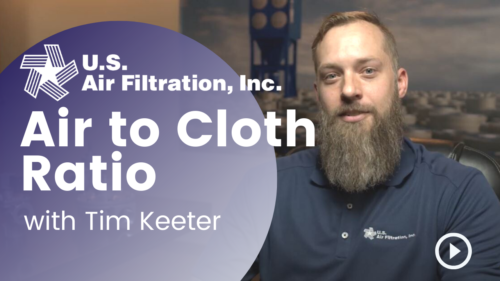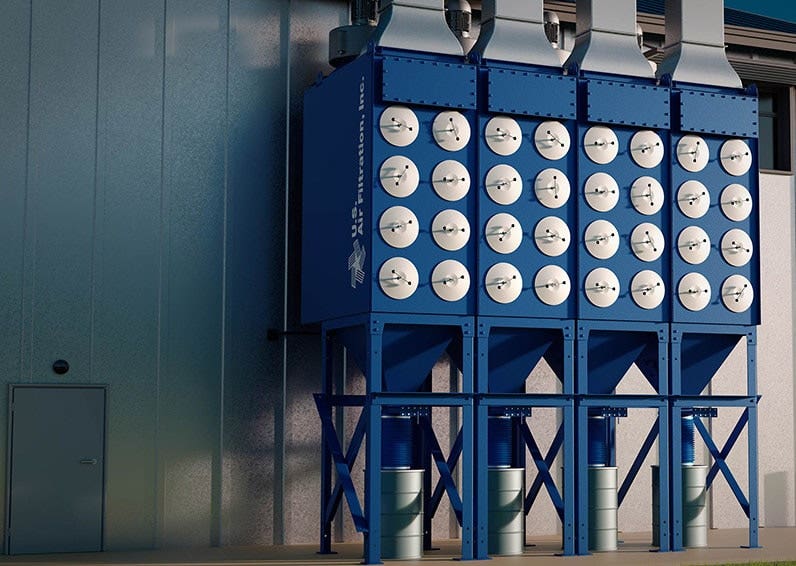Video Option: Air-to-Cloth Ratio
Dust collector air to cloth ratio is a critical measure to ensure your system is performing efficiently.

What is Air-to-Cloth Ratio?
Air-to-Cloth ratio (a.k.a. Air-to-Media) is defined as a measurement of the amount of air passing through one square foot of filter media.
Watch Video: Air-to-Cloth Ratio
Which is better, Lower or Higher Air-to-Cloth Ratio?
Generally the lower your air-to-cloth ratio, the more effective your system is at removing dust from your work environment.
If you operate on a higher air-to-cloth ratio, one of the common issues you will encounter is a decrease in suction. This happens because there is too much dust to capture with an insufficient amount of filter media. The filter cake on your bag eventually builds up too quickly. As a result, your air velocity and suction decreases. From there it's a domino effect and your plant air quality decreases, filters clog quicker, and valve life expectancy is impacted. So, you'll be performing change-outs more frequently which will cost both time and money.
How to Calculate Air-to-Cloth Ratio
To calculate air-to-cloth ratio, take the amount of airflow (CFM) and divide that by the amount of filter area within your dust collector.
For example, if you're calculating for a cartridge collector, a typical range would be a 4:1 air to cloth ratio. Keep in mind that environments with a large ventilation area and more pick up points require a system with a higher CFM to provide adequate suction. Would you like to know which air to cloth ratio may be right for your project? If so, download our air to cloth guide which provides the recommended ratio for a wide variety of applications.
Why is right Air-to-Cloth ratio important?
- Extends your filter life, therefore avoiding frequent change-outs
- You minimize operating costs
- Meet air quality goals and requirements
- You are running a healthy dust collector system, so it performs at it's peak efficiency
What are the negative effects of improper Air-to-Cloth ratio?
- Poor venting, therefore causing damage to equipment
- Incur high pressure drops
- Impacts your air velocity
- Excessive use of compressed air
Related Resources:
https://www.usairfiltration.com/how-to-get-the-right-dust-collector-for-your-application/
https://www.usairfiltration.com/what-volume-dust-collector-do-i-need/









